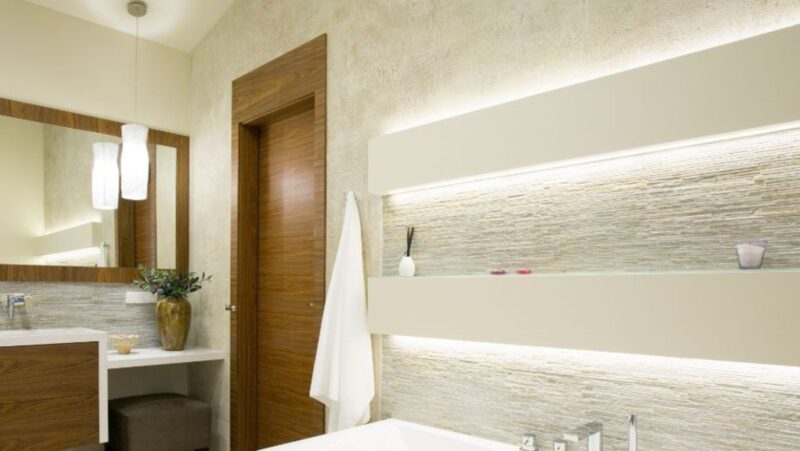
Imagine a world where you can control your home’s temperature with just a swipe on your phone. Welcome to the era of smart thermostats! These nifty devices not only offer convenience but also a plethora of benefits that traditional thermostats can’t match.
Understanding Smart Thermostats
Let’s delve deeper into the world of smart thermostats.
What Is a Smart Thermostat?
A smart thermostat is an advanced, programmable device that regulates the temperature of your home for ideal comfort levels and energy efficiency. It’s Wi-Fi-enabled, allowing it to be controlled remotely through a cloud service, mobile application, or smart home system, promoting high-quality air ventilation.
How Do Smart Thermostats Work?
Smart thermostats leverage modern technologies such as Wi-Fi, sensors, algorithms, or cloud-based data analytics for real-time temperature adjustments. They track the inhabitants’ usage patterns or preferences, learning the ideal temperature settings for different times of the day. An example could be maintaining a comfortable temperature of 70 degrees Fahrenheit during waking hours in winters, as recommended by the U.S. Department of Energy. The smart thermostat will then autonomously adjust the temperature, optimising energy consumption and providing the ultimate convenience.
Key Benefits of Upgrading to a Smart Thermostat
In this section, I’ll delve into the numerous benefits provided by a smart thermostat.
Energy Efficiency and Cost Savings
One of the most significant advantages is energy efficiency and cost savings. Smart thermostats, with their advanced programming capabilities, contribute notably to improving the energy efficiency in your home by optimizing the scheduling and temperature setting. As per the U.S. Department of Energy, homeowners can save up to 10% annually on heating and cooling costs by simply lowering their thermostat by 7-10°F for 8 hours per day. Unlike traditional units, smart thermostats automatically do this, cutting down your energy usage.
Automated Temperature Control
Automated temperature control is another advantage of a smart thermostat. These devices use advanced sensors and algorithms to understand your usage patterns.

They then customize and automate temperature control, ensuring your home is always at your preferred comfort level. For instance, they’ll learn how cold you like your home to be during winter nights, automatically adjusting it for you.
Remote Monitoring and Control
Finally, let’s talk about remote monitoring and control. Running late from work or gone for the weekend? No worries! With a smart thermostat, you can adjust your home’s temperature from anywhere using your smartphone. By promoting high-quality air ventilation, this remote controllability, directly or via cloud services, assists in maintaining a consistent and comfortable home climate. It’s yet another reason why upgrading to a smart thermostat makes your life more convenient while also making your home more advanced.
Comparing Smart Thermostats to Traditional Models
Drawing a comparison between smart thermostats and traditional models, the edge clearly leans towards the former. Expanding on the vital aspects of technology and user interaction, it’s an exciting scene that unfolds.
Technological Advancements
When discussing technological advancements, smart thermostats up the game significantly. Integrating Wi-Fi technology and sensors, smart thermostats excel at monitoring and regulating home temperatures. Importantly, they provide significant energy efficiency, an aspect that the U.S. Department of Energy affirms. Another standout feature is their ability to optimize scheduling based on common usage patterns. This quality enables more precise temperature control and subsequent energy savings. Plenty of models include high-quality air ventilation functionality, promising cleaner and healthier air circulating within your home.
User Interface and Accessibility
Diving into the user interface and accessibility, smart thermostats again stand tall. Traditional thermostats demand physical interaction for any adjustments, whereas smart thermostats offer remote controllability. They are usually more intuitive and user-friendly, with many sporting dynamic touch-screen displays. Moreover, they offer web and mobile interfaces, which means you can monitor and control your home temperature remotely. This distinct advantage ensures that the home climate remains consistent, meeting comfort needs without any compromise.
Installation and Setup
Moving forward from the advantages of smart thermostats, it’s time to delve into the process of installation and setup, which might seem overwhelming but isn’t truly complicated.

Choosing the Right Model
Picking the suitable model matters as it should align with your home’s heating and cooling system. With a plethora of models available in the market, I recommend basing your choice on your home’s infrastructure, Wi-Fi compatibility, and your energy-saving objectives. High-quality air ventilation, a feature present in some models, comes backed by experts from the U.S. Department of Energy as a notable factor in energy savings.
Professional vs. DIY Installation
Onto the debate between professional and DIY installations. Professionally installed smart thermostats ensure error-free setup, accurate calibration, and nullify risks of damage. On the other hand, DIY installations allow a cost-effective solution. Rest easy as many models come with step-by-step guidance for setup, hinting it’s a feasible task for the tech-savvy users. Evaluate the pros and cons, considering your comfort level with technology and the specific requirements of the chosen smart thermostat model.
Conclusion
So, there you have it. Upgrading to a smart thermostat isn’t just about getting with the times – it’s about making a smart investment in your home’s energy efficiency and comfort. Their advanced tech features and remote controllability offer a level of convenience and control that traditional models just can’t match. Plus, with the potential for significant cost savings, it’s clear that a smart thermostat could be a game-changer for your energy bills. Whether you’re a DIY enthusiast or prefer professional installation, there’s a smart thermostat out there that’ll fit your needs and home infrastructure. In a world where technology is king, isn’t it about time your thermostat got smarter?












